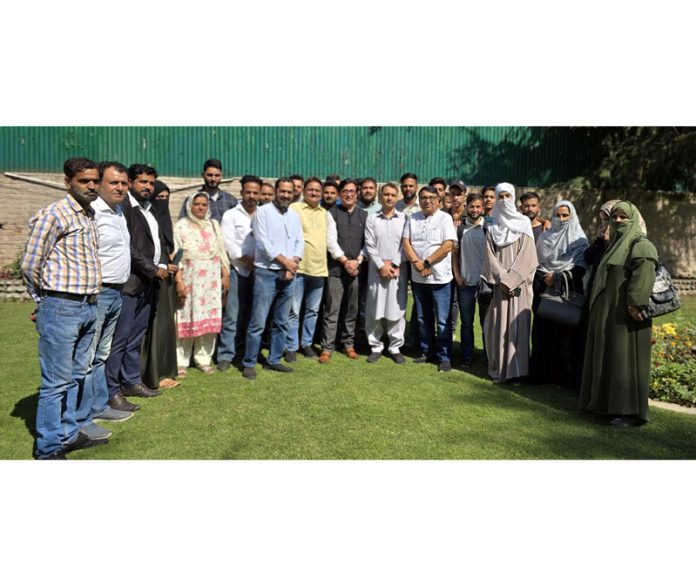'I met the Yorkshire Ripper, Dennis Nilsen and Charles Bronson. I wanted to know what evil felt like.' Author LYNDA LA PLANTE’s withering verdict on the notorious killers (and celebrities) she's met By Michael Odell For You Magazine Published: 08:01, 31 August 2024 | Updated: 08:01, 31 August 2024 e-mail View comments In my life I’ve brushed off people being f*****g rude too often,’ says Lynda La Plante.
‘Sometimes one has to hit back.’ So petite she’s almost lost in the folds of a battleship-size sofa, La Plante is holding court in the wood-panelled front room of her West London home. Baftas adorn the mantelpiece and a Crime Writers’ Association Diamond Dagger – which she won earlier this year – is displayed on a table next to her.

Lynda La Plante photographed by Lord Snowdon, 1986 La Plante, 81, is most famous for her TV dramas Widows and Prime Suspect , as well as more than 30 crime novels that have sold well over three million copies. But we are here to discuss her new memoir, Getting Away With Murder . It tells how Lynda Titchmarsh grew up in postwar Liverpool, won a scholarship to Rada at 15 and acted as Lynda Marchal before becoming the writer Lynda La Plante (she took the surname from her ex-husband Richard, who she divorced in 1996).
Getting Away With Murder is La Plante’s real-life story and is ‘quite an angry book’, she says. Born in 1943, she had a tough childhood. Her mother Flossie suffered mental health issues following the death of La Plante’s older sister Dail, aged five, in a road accident, and rarely offered encouragement.
(She didn’t even realise her daughter had written the hit series Prime Suspect until it was in its third season.) Also highly dyslexic (at primary school she had to sit on the ‘silly table’), the young La Plante didn’t appear to be an embryonic screenwriter and author. Even after Rada – which she attended with Anthony Hopkins and John Hurt – her prospects didn’t look good.
Her agent described her as ‘short, ordinary-looking, good for [playing] middle-class mums’. ‘And that agency was run by my [younger] sister – thanks a lot!’ she says. Lynda (far right) with younger sister Gillian, brother Michael and mother Flossie Still, a young La Plante fielded work offers in an uncompromising style.
When director Nicolas Roeg wanted to cast her opposite Mick Jagger in his 1970 film Performance he warned La Plante the role included nude sex scenes. ‘I certainly wasn’t taking my knickers off for anyone,’ she huffs. Anita Pallenberg eventually took the role and, it’s rumoured, filmed real sex with Jagger despite being fellow Rolling Stone Keith Richards’s girlfriend.
‘I wasn’t that liberated!’ she says. In the 60s and 70s La Plante seemed to encounter badly behaved men around every corner. She was not impressed by a drunken proposal from the actor John Thaw and, having dinner at London restaurant The Ivy one night, was astonished to find theatre director Trevor Nunn’s hand on her thigh.
‘I simply said, “Your hand appears to be on my leg”, and he looked mortified.’ Lynda at the 1994 Emmy Awards with Helen Mirren Nor did she like it when she saw men mistreat others. In 1981, while appearing in Naked Robots , a play at London’s Donmar Warehouse, La Plante encountered a young Trudie Styler (now a film producer) having an affair with Sting, then still married to La Plante’s friend, the actress Frances Tomelty.
La Plante writes that she found Styler and Sting’s relationship ‘faintly disgusting’. ‘Frances was pregnant with Sting’s second child so – call me Miss Nosy – I thought someone should warn her. Of course, Trudie and Sting have since made a very happy marriage, but nobody should ever tell me a sexual secret because I’ll be unable to hide it.
’ In the early 80s, bored with acting, she decided to be a writer – quite a career change for the dyslexic kid on the ‘silly table’. ‘Yes, but I always had stories in my head,’ she says. ‘When you’re dyslexic, you memorise things so you don’t make a fool of yourself.
’ To support herself while she was no longer taking acting jobs, La Plante worked on a London market stall selling, as she puts it in the book, ‘mostly junk’. One day she met a woman on an adjacent stall whose husband was in jail for armed robbery. She inspired La Plante to create Dolly Rawlins, the lead character in her early-80s ITV drama Widows .
The story of three ballsy women and an accomplice who continue the criminal careers of their dead partners ran for two years and was nominated for a Best Drama Series Bafta in 1984 (inspiring a 2018 Hollywood drama of the same name). Lynda with her son Lorcan in the mid-2000s A decade later, after several novels and another drama, Civvies , about the struggles of former soldiers, La Plante wrote the Bafta and Emmy award-winning Prime Suspect . The lead character DCI Jane Tennison was inspired by a real-life female detective, Jackie Malton, who gave La Plante plenty of background.
She even took her to a postmortem where she passed out when the corpse on the slab farted: ‘No one warns you they do that,’ she says. Malton gave La Plante everything she needed to create the uncompromisingly tough DCI Tennison, so memorably brought to life by Helen Mirren. Mention Mirren’s name and La Plante’s eyes sparkle.
‘Helen is wonderful,’ she says. ‘When I told her that Jane Tennison would never smile or flirt with male officers to get what she wanted, she immediately got it.’ Fearless research is a trademark of all La Plante’s writing.
Working on her 1995 ITV series The Governor led her to encounters with the Yorkshire Ripper Peter Sutcliffe and serial killer Dennis Nilsen. ‘I didn’t simply want to read about evil, I wanted to feel it,’ she says. ‘Sutcliffe was a monotone bore and Nilsen just so very bland – but beyond the dullness lies the menace.
’ She also interviewed notorious armed robber Charles Bronson. La Plante found him reasonably charming but he scared her production staff. ‘There were endless phone calls where he enquired after their crotchless knickers,’ she says.
‘Not nice.’ She had married American musician and actor Richard La Plante in 1976, after meeting at a wedding in Surrey. More than anything she wanted a family, and the couple’s fertility struggles were heart-rending, with La Plante suffering more than one miscarriage.
Lynda at home earlier this year Despite these struggles, the couple were happy, buying a flat in South Kensington with a beautiful domed roof and a historic church organ. The previous incumbent had allowed a neighbour, Freddie Mercury, to play it, but when the singer paid La Plante a visit, wanting to use it, she shut the door in his face, because she had ‘no idea who this person with remarkable teeth was and I didn’t want strangers coming round willy-nilly’. Not even her Liverpool compatriots Paul McCartney and Ringo Starr were welcome when they asked to shoot part of McCartney’s 1984 film Give My Regards to Broad Street in the flat.
La Plante wanted to say no, but her husband said it would be ‘bad karma’ to refuse a Beatle. ‘Paul and Linda followed each other around in an extremely vacuous manner. And when Paul saw the great dane I was looking after he asked me, “What kinda dog is tha’?”’ she recounts in a monotone Scouse accent.
‘I was very unimpressed.’ But it was Ringo who really ruined the day for her, popping a champagne cork that smashed the William Morris skylight. ‘I was incandescent!’ she recalls.
‘The idiot!’ La Plante must be the least starstruck person I’ve ever met. Her whip-crack assessments of entertainment’s great and good fill her book. When Mick Jagger and David Bowie request a meeting with her to discuss a possible screenplay they come across as hungover buffoons.
After casting an unknown Ralph Fiennes in a walk-on role in Prime Suspect she notes: ‘I’m not sure he’ll go far as an actor.’ ‘You have to be honest,’ she explains. ‘Most people in film, TV and publishing are lovely but occasionally one encounters an absolute c***.
’ La Plante is charming company and she has me rocking back in my chair with laughter. But is she really that combative? ‘I’m a fighter. Show me arrogance or narcissism and we go into battle.
’ This spirit helped her when her hopes of having children, and her marriage to Richard, ended in the most painful way. In 1994 she discovered he and her PA Betina were having an affair. Worse, Betina was pregnant.
She and Richard would call their son Ben, the name Lynda had chosen for the son she so dearly hoped for. ‘Oh, the pain when he named his son after the baby I lost,’ she says. ‘Was he aware of it? I doubt it.
’ Divorce followed and she mentions one short, unsuccessful relationship. Undeterred, La Plante underwent IVF treatment alone. It was successful initially, and in her mid-50s she became pregnant with triplets but lost them after a month.
She was about to give up when, one day in 2003, aged 59, she got a call from a hospital in Boca Raton, Florida where she was registered for adoption. A baby needed a mother. Within 24 hours La Plante was on a plane; she held her son Lorcan when he was two days old.
‘I remember holding this newborn and thinking, “No one will hurt you”, not, “You are mine” – it was all about protection and the most important moment of my life. Yes, I was 59 years old, but would I have been as good a mum in my 20s or 30s? I doubt it.’ She gives an example.
Later, when Lorcan was a young teenager and being bullied at his boarding school, La Plante brought all her experience to bear. ‘There is a lot of fear in young mothers not to cause problems. Even at a prestigious school in Oxford the culture is “keep your mouth shut”.
So how do you react when your son says, “I’ve been attacked by someone wielding a sock full of nails and an iron bar”? I’ll never forget the words of the housemaster: “Yes, but they weren’t big nails – they were tacks.” The brutality at this school was astonishing, so the fight was on. I said, “Either I bring in the police or I’ll take my son out of this school.
” I could never have done that as a 30-year-old mother.’ Lorcan left the school. Now 21, he is training to be an airline pilot and living in his mum’s old garden office (it’s been converted into a bedroom) with his girlfriend.
La Plante is currently finishing a new Jack Warr thriller and a new TV drama based on the life of a scene-of-crime officer. ‘I have a womb-like office upstairs that’s lined with books,’ she says. ‘That’s my favourite place.
’ Every morning she begins writing after breakfast and continues until lunchtime. In the afternoon she might walk Hugo her dog (sadly, he died not long after our interview) or watch TV while tackling any problems with the work at hand. ‘My subconscious unpicks the problems,’ she says, ‘and by the next morning I’m ready to go again.
’ She clearly still loves the job but there is anger, too. She has not retained the rights to some of her most memorable creations. ‘How did Lee Child make millions and end up sitting in a sumptuous ranch in America while I’ve written so many successful films and books and yet have nothing?’ I think some people might quibble with La Plante’s idea of ‘nothing’.
Her Kingston home is beautiful, she used to collect cars and own racehorses and in 2019 she sold her house in the Hamptons (it was listed for $6 million). ‘I don’t own the rights to Jane Tennison because no one ever said, “Don’t sign that contract”, she says. ‘No one said, “Get a lawyer”.
I’m angry with myself for being so stupid. But a wise friend once told me, “Don’t be angry, be successful” and that’s still my plan. I’m 81 but the best is yet to come.
’ Getting Away With Murder will be published on 12 September by Zaffre, £22. To pre-order a copy for £18.70 until 15 September, go to mailshop.
co.uk/books or call 020 3176 2937. Free UK delivery on orders over £25.
, Robert Weston, lynda la plante Share or comment on this article: 'I met the Yorkshire Ripper, Dennis Nilsen and Charles Bronson. I wanted to know what evil felt like.' Author LYNDA LA PLANTE's withering verdict on the notorious killers (and celebrities) she's met e-mail Add comment.



















